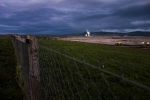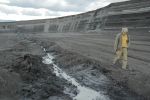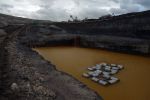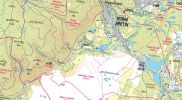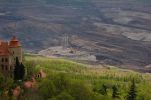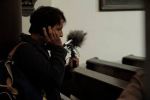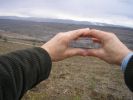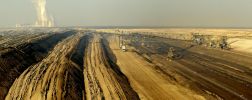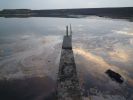For the Gathering in Mariánské Radčice we have selected a number of project proposals. What follows is a preliminary program.
Friday Afternoon beginning at 15.30
WELCOME and THE POST-NATURAL LANDSCAPE: A USER'S GUIDE
Miloš Vojtěchovský / Vít Bohal
Bill McKibben’s well-known and pessimistic thesis from his book The End of Nature (1989) says that it might be “too late to do anything besides worry. Because ‘nature’ might already be over”. In particular, as a result of the large-scale climate change produced by our technologies — by the burning of fossil fuels or damage to the ozone layer — we have entered a new stage in geological history, one in which almost no piece of the landscape can any longer be correctly called “natural.” But if “nature” has disappeared, or has been transformed into something else, is there a space for environmental or artistic agency? That is, can we do more than complain about what humans have destroyed or lost and why; or do more than just try to save and protect small niches of “pristine” ecosystems; or capture, for example, the sounds of a melting iceberg? We also have the challenge of formulating a “post-natural” ecology, an “ecology without nature”, as proposed by Tim Morton, or a discourse on “post-natural sound arts”, as offered by Mark Peter Wright. Artists, scientists and environmental activists are increasingly using both images and sounds to visualize and create sonifications as a means of interpreting the effects of global environmental change and the processes of extinction. The environment in which the Soundworms Gathering takes place might be the perfect location for such discussions, because it is an example of the post-natural landscape. During the last 70 years, extensive open pit mining has reshaped the entire area along the Ore Mountains into a large man-made earthwork. With giant man-made canyons, lines of smokestacks, deep rifts, petrochemical parks, some of which have recently been reverted to deep artificial lakes, artificial hills, and artificial forests. The speed with which non-human organic life reclaims its poisoned environment is astonishing. Can this be a sign of hope for the post-human environment and for artistic practice?
SOUND OF PARADISE
Petra Kapš (Maribor)
Presentation
What would the sonic representation of paradise — a paradise of/for today — be like from a personal or collective perspective? At The Library of Paradise we listen to distinctive Eden-like soundscapes and read about walls and fences, and remote, distant, high areas, which enable paradise in spaces similar to ours but with different time curves. Apart from the usually changeless environmental conditions there is also a permanent paradise, an acoustic condition. Humans, with the help of a digital no-time matrix, constantly assisted by resources from the depths of the earth, currently produce sound fields without seasons. If some bird is loud in the springtime, in high summer it is quieter. If some tree rustles in the summer and autumn, in the winter it sounds different. We cannot avoid the constant present of sound produced for humans. A constant present of unchanged sound is what I would propose as a definition of contemporary hell, with permanence as its fundamental feature. The drone of the digitized world is not measured in time, or seasons, but by profit, and fulfillment of our small habits and needs for a constant present and for all kinds of goods. The result is brutal — the deafness of the world expands violently. The inhabitant of our paradise is deaf. I propose a silent, time-based, mortal paradise. Stars swim in silence, / a meadow opens. / Who awaits? (Jure Detela).
Petra Kapš alias OR poiesis (b. 1975, Slovenia) weaves her work among the arts of sound, radio, chrono-spatial poetry, poetic performance, books and reflection. Aside from the ethereal features of sound, she focuses on the physical presence of the body. She extends the word, her core medium, with sonic spheres of sonorous poetry. Kapš is interested in aural memory and the deep time of the body. Incorporating an (a)syntemporal presence through the digital sphere, she researches the possibilities of intimate radio and is concerned with the void ear of the internet listener. Her sound/radio/book works are located solitudes.
FROM J.M.W. TURNER TO V. TURNER: ART FROM A COSMOPOLITAN PERSPECTIVE
Milan Kreuzzieger
Our age has many designations and characteristics: from altermodern (N. Bourriaud), an unfinished project of modernity (J. Habermas), supermodernity (M. Augé) to a great regress (H. Geiselberger), a post-human and dark age. I would like to focus on cosmopolitan modernity as a frame for interpreting or reinterpreting art. Reference figures are for me researchers from sociology, philosophy, art history, cultural studies like U. Beck, M. Nava, D. Chaney, M. Meskimmon, B. Benish and the others.
It is supposed that a “cosmopolitan turn” should also change our imagination, practices in many disciplines including art, and emphasise new topics and perspectives. The reinterpretation of art history from an environmental point of view could be one example.
Dr. Milan Kreuzzieger is a researcher and curator focusing on issues of intercultural relations and the interpretation of cultures in a global context. He concentrates also on cosmopolitan theories and the transformation of identities withinin a global context, framed within the context of visual studies.
http://cgs.flu.cas.cz/en/kreuzzieger/kreuzziger-en
CRISIS AND THE EVERYDAY
Re-constructing Shared Space Through Creative Participation
Daniel Alexander Hignell (Brighton, UK)
Presentation
Anthropologist Victor Turner’s description of crisis as the median stage of a community’s becoming seems acutely prescient in a time defined — socially, politically, and ecologically — by a nearly perpetual state of unrest. Since such a crisis is not an end point, but a liminal stage, we might consider our current crisis to point to a renewed urgency within the community, in which the arts serve to elucidate a sense of the beyond that pre-empts new potential ways of being. The event of art, as the philosopher Brian Massumi suggests, is to foreground semblance, the potential for another perspective. As such, art cannot be seen as a form of communication in any traditional sense, since its remit is not to transfer understanding between its interlocuters, but to promote an engagement with externality that extends beyond what is readily available to the community. This might be seen as particularly true of the sonic arts — as Jean-Luc Nancy states, “to listen is to be straining towards a possible meaning, and consequently one that is not immediatey accessible.” In this paper I will be exploring how such forms as sound art, site-specific work, and the dialogic arts in general can directly engage with existing ecological structures, and use the magnitude of the current crisis to elicit meaningful and long-lasting change within the agora. In doing so, I will seek to draw parallels between (sound) art’s ability to co-opt the self/other divide as a means of posing tangible moral questions, and their wider ecological function — that of forging a universal and participatory rethinking of the site and the mechanics of shared space. Drawing on my recently completed Ph.D., in which I developed a 130-page text-score designed to challenge and reconfigure the existing social dynamics of the everyday, I will discuss the changing role of art in light of the social and ecological challenges of the current era.
Daniel Alexander Hignell is a musician and sound artist working with themes of participation and communality. He received a Ph.D. in composition at the Dartington College of the Arts and primarily works with texture over melody. Hignell focuses on the augmentation of all manner of sonic objects, whether instrumental or found sound, synthetic or organic, in order to induce both an academic and emotional response from the listener, encompassing drone, field recording, contemporary classical, improvisation, synthesis, text, and video. He will be situated in the Forever Bunker, spearheading real-time audio processing of the acoustic improvisations of the Forever Tent.
info@distantanimals.com
http://www.distantanimals.com/
THE BIALOWIEŽA FOREST
Martyna Poznanska and Peter Cusack (Berlin/Kraków/London)
Presentation and Listening session
Bialowieza is the last area of primal forest in Europe, a UNESCO World Heritage site and home to many rare and unique wildlife species. It is currently threatened by increased logging after the Polish government’s recent changes to environmental policy. The ensuing international debate gives the context for this work. The project aims to explore the issues in Bialowieza Forest through sonic journalism and more poetic approaches – those of sensing and experiencing the territory. The main medium will be sound and field recording, but complemented by film, photography, writing, talking to and learning from local people. The intention is to focus primarily, but not exclusively, on the small and intimate relationships hidden within the forest, including listening to the micro sounds of bark beetles inside trees, exploring visual patterns created by insects and small plants and talking to local people about their own relationship to the forest. The project hopes, not only to give exposure to the political/environmental debate, but also to illuminate those relationships within Bialowieza that shed light on the hidden life of trees and on the human decisions that directly impact the forest.
Peter Cusack (b. 1948, London) is a field recordist and musician with a special interest in environmental sound and acoustic ecology. His projects have included community arts, research into sound and our sense of place, and documentary recordings in areas of special sonic interest (Lake Bajkal, Aral Sea, the Chernobyl exclusion zone, the Caspian oil fields, or UK nuclear sites). The project Sounds From Dangerous Places explores soundscapes at the sites of major environmental damage. Cusack initiated the Favourite Sounds project in London 1998 with the aim of discovering what people find positive about their everyday sound environment. The project has since been established in Beijing, Berlin, Brussels, Chicago, Prague and Birmingham. He lectures in Sound Arts and Design at the London College of Communication and was recently a DAAD artist in residence in Berlin.
Martyna Poznanska (born 1984, Bialystok) is a sound artist investigating environmental sounds, noise within urban environments, associations between sounds and objects, and performative aspects of listening. Her work features composed music created with field recordings, installations, situational performances, and live improvisation. She studied at the University of the Arts, London, and is currently studying Sound at UdK, Berlin. She works between Krakow, London and Berlin.
info@martynapoznanska.com
http://www.martynapoznanska.com/
Friday Evening
FRAGMENTS OF NORTH BOHEMIA
Ibra Ibrahimovič (Most)
Photoprojection and Presentation
No matter how detailed a map we might draw of our country’s northern reaches, it will also be a blind map. Its original has been lost. Our map of northern Bohemia, also known as the Sudetenland, has been scrawled on, scratched out, erased, and thrown away. Its pictorial atlas, created by Ibrahimovič, arouses fears and adds more confusion to its history. Does losing a map also mean the end of a piece of the world? Does the lost map expand to fill what remains? (Ivan Mečl)
Ibra Ibrahimovič was born, works and lives in Most. He photographs landscapes of areas destroyed by industry and makes portraits of the people whose lives are simultaneously being ruined. The subject of his photography could be called environmental justice. His portrait of the town of Libkovice can be considered as one of the most striking examples of engagement by artists in the issues of the environment and human rights. Libkovice’s history is a sad story, and more than 200,000 people hade lost their homes before the bulldozers of Hlubina reached the city gates in 1992. Libkovice is merely one out of 100 villages that shared the same fate around Most.
THE SOUND IS INNOCENT
Johana Švarcová and Martin Ožvold(Prague)
Presentation
A presentation about an upcoming documentary film with interviews with musicians, such as John Richards (Dirty Electronics), Steeve Goodman (Kode 9), Robert Henke (Monolake), Julian Rohrhuber, Francois Bonnet (Kassel Jaeger, GRM), et al.
Johana Švarcová is musician, film director and performer, she graduated from the Film Academy in Prague. She co-operates with official theatre scene since 2000, she appears in the theatre as an actress, an improviser, a writer and a musician. In 2007 she was awarded as a Discovery of the year at the festival Next Wave. She regularly collaborates with Czech Radio as a writer and a director of radio plays and audio-musical compositions.
Saturday Morning
RETHINKING HARMONY, RESONANCE AND ENERGY — ARIEL GUZIK
Piotr Tkacz (Kraków)
Presentation
Expeditions to a vibrating ecosystem the central point is Ariel Guzik’s non-anthropoentric, equally scientific and magical art. This Mexican creator constructs research instruments that are also musical instruments. Thanks to those machines it is possible to hear sounds made by plants, in others the basic material is water flow whose sound is shaped by weather data. In recent years, inspired by both Jules Verne and quantum physics, Guzik builds underwater probe-instruments and vessels conceived to establish contact with cetaceans. The sea, which is up to this day the last great frontier of Earth, has always constituted a quest for human minds and imagination. It’s a kingdom so huge and hard to examine that even with all our efforts people managed to get to know only its tiny fraction. Guzik’s works encourage to rethink and re-evaluate the meaning of such concepts as harmony, resonance and energy. Thanks to amplification of the world as a kind of continuum, a composition unfolding by itself, where everything is inter-connected and affects on an elemental level, these technologies redefine the role and place of the human. Guzik’s activites will be looked at through the hyper-prism of Edgar Varese, put onto blueprints of vibrational (an)architecture of Steve Goodman, filtered through entropic ideas of Robert Smithson and placed as a part of the „Mille Plateaux“ picturesque landscape.
Piotr Tkacz (b. 1985 Poznań, Poland) is an improviser, organiser, writer, and DJ. His articles have been published in Surround, Czas kultury, Glissando, 2+3D, Dwutygodnik / Biweekly, Fragile, Jazz Forum, and M|I. From 2007 to 2016, he co-hosted the show Audiosfera in Radio Afera. Since October 2016, he has a solo broadcast Zasypywanie kanonu. He is involved in such initiatives as Za duszno, the festival of improvised music FRIV, Warsztat dźwięków. He is a part of such music projects as Kurort, Radioda, Revue svazu českých architektů, Stupor, Tkacze, Lata, Sumpf and has also recorded with Alice Hui-Sheng Chang, Herman Müntzing, Pascal Battus, Eric Wong and Seiji Morimoto. Open scores (text-based and graphical) are of special interest to him both from practical and theoretical perspectives. Tkacz has been invited to such festivals as Ostrava New Music Days, Animator, Musica Electronica Nova and has lectured at the National Museum of Ethnography in Warsaw, FAMU in Prague and Kulturhauz in Toruń.
https://piotrtkacz.wordpress.com/
EXPANDED SOUNDWALK
Hannes Hoelzl (Berlin)
Soundwalk
We can not erase noise in the field — all we can do is add even more sounds to it, hoping they will pleasantly merge with the pre-existing ones and take away some of their ugliness. (Keiji Otoma)
In sound walks, our desire to disappear as a subject and to turn to a pure sensing mode often prevails the discomforting knowledge of the Observer Effect: the fact that we have no way to observe a system or environment without changing or influencing it, may appear as the proverbial monkey we can not shake off our back. Embracing the situation, we propose a series of explorative sound walks in the Mariánské Radčice area, where the soundwalkers are not silent, but intervene in the soundscape by emitting sounds and listen to both the environment’s utterings and the reflections/resonances of their own emissions, much like a dolphin or a bat listening and echolocating at the same time.
Corresponding to the dolphin metaphor, we will employ a sound device with a long reach and a narrow beam similar to the Sondols (sonar dolphins) employed by Alvin Lucier in his 1965 piece Vespers, but with an extended sonic gamut. The device, provisionally named Sombat, will be built for this occasion specifically.
The method goes back — in my private historiography - to a sound exploration series organized in 2011 with Davide Tidoni, in which the interventionist aspect added to sound walking revealed to me, for the first time, an epistemic potential - both acoustically and socially — that far exceeded the mere listening approach I had aquired as a kid in the birdwatching trips with my aunt.
Hannes Hoelzl (b. 1974, Italy) is a composer, sound installation artist and teacher lives in Berlin. He graduated from Utrecht’s Art Academy HKU (NL), intership at the Studio for Electro-Instrumental Music (STEIM), Amsterdam, a fellowship in sound arts at Cologne’s Media Arts Academy KHM. A red line connecting his diverse artistic practice, most often manifested as installations with a sonic component, is his interest in languages and the translation processes between them. Such translations can re-occour at the boundaries between perceptual modalities as in visualisation, audification and sonification, in conceptual transferrals of site specific work, or by employing archives of text as artistic raw material, as manifested in his current piece ‘AudioVisual Anarchivism’, jointly developed with composer Alberto de Campo and computer linguist Daniel Hromada.
THE MATTER OF THE SOUL
Kat F. Austen (the Scott Polar Research Institute)
Discussion/presentation
The Matter of the Soul brings together sound recordings that directly relate to dispersal in the Arctic region - of water, of people, of culture and of identity. It will convey felt and sensual knowledges about a non-human agent in an attempt to engender embodied and emotional knowledge. The physical and socio-political aspects of climate change in the Arctic are transformations to which we ascribe value according to our subjectivities.
Dispersal is a transformation that affects and is affected by its agents. The Matter of the Soul, a sound and sculptural work in progress, questions our subjectivity towards transformations by engendering empathy for dispersal in the Arctic region. Solid and liquid water are artefacts of the coming together of individual water molecules, just as culture emerges from the coming together of individual human beings. Water in ice both has its behaviour shaped by its environment and is party to constructing this environment, just as we human beings are shaped by and construct our culture. When the water moves and leaves its culture behind to venture into the ocean, and to migrate, its behaviour and trajectory is changed by the ocean that it has joined and become part of. Just as when we travel – either for tourism or migration – we change and exchange with the cultures we encounter, and within ourselves. Sound recordings from hacked scientific equipment that measures this melting and movement will be presented alongside interviews with residents and visitors to Baffin Island in the Canadian Arctic, and documentation of the artistic process. The recordings were taken in July-August 2017 as part of the Artist in the Arctic residency with Friends of SPRI (Scott Polar Research Institute, University of Cambridge), Bonhams and OneOcean Expeditions.
Kat F. Austen The environment is Kat’s passion, and her interest is largely held by finding intellectual, experiential and sensorial ways of understanding the relationship between the self and other(s) in all its complexity. Her new media artworks meld sound, sculpture, interactivity and installation to explore our acts at different levels - individual, collective, communal, municipal, state, national, international - in the context of a global, digitally-enabled society. The aesthetics in her artworks treads the line between naive and polished, messy and sleek, humorous and disjointed. For instance, she once drowned a lot of tiny people in a bath to make a point about social media.
Based in Berlin, Kat is Artist in Residence at the Faculty of Maths and Physical Sciences, University College London, and Artist in the Arctic 2017 for SPRI / Bonhams / OneOcean. She has been artist for NYU Shanghai Gallery, NYU Shanghai PCI, LAStheatre, The Clipperton Project and Utter! Spoken word, among others. She is a member of critical art collective Stereotropic Anecdota, and is the founding lecturer of UCL Arts and Sciences BASc course Citizen Science for Radical Change: Co-design, Art and Community, which is part of her social performative work, Vital.
http://katausten.com
http://worldflows.net
http://iamkat.contently.com
GEWORDEN
Gertrude Moser-Wagner
GEWORDEN Gertrude Moser-Wagner Discussion For the Soundworm Ecology Gathering I will focus on my installation Geworden, which ended up as an art-radio broadcast piece, thus embracing the creation of an analogy (stone and human being). In 2014, during a residency in Krastal, located near a marble quarry, I looked at the material of marble rather conceptually, as a sculptress by education. Marble is recrystallized limestone, a material in metamorphosis. It has become what it looks like („geworden“) through a long-term recrystallisation process. For this project, geological layers were compared, together with sound based elements and individual narration, to human walks of life. The artist Moser-Wagner asked two geologists, Sabine Grupe from WGM Vienna and Beatrix Moshammer, who had worked on site, to show their photographs of thin sections of marble under a polarization microscope, and invited both to give a spoken contribution at the opening of [kunstwerk] krastal-projekt (curator Meina Schellander). Moser-Wagner has continued her manual installation work, using such microstructures as installation elements, referring to the Sculpture-House at Einoede, Krastalerstrasse 24, and thus physically and conceptually enlarging its outer space. In the second step, she compared the metamorphosis of the stone on site to the life story of a selected elderly person (the artist’s Italian teacher) whose personal eruptions/sedimentations in that topograpical area beween three countries (Austria/Italy/Slovenia) during the last World-War had left some hidden traces.
Gertrude Moser Wagner searches in her projects for singular perspectives and diverse transdisciplinary approaches beyond a partially scientific view. Being an artist and working in spaces in a process-oriented way with a view to context and communication, she creates, together with others, something like a poetic sculpture. “The ground on which our feet are standing” (2000, Museum of Natural History, Vienna) was one of her first projects of this type, deriving from her “soil sample series” artworks (1998-2000). From 2009 on she developed several international projects, entitled “art goes science,” mainly exhibitions with process-based or poetic interventions in public spaces, books and symposiums (f.i. POLIPOLOGO, in 2009 at Sigmund Freud University Vienna; 2010 “Hallo Irrgast” in collaboration with Museo della Migrazione degli Uccelli, Ventotene, Italy, at the University of Natural Resources and Life Sciences Vienna).
Saturday Afternoon
INSTITUTIONALISATION OF SOUND ART AND THE ECOLOGY OF ART
Martin Ožvold (Praha)
Discussion
Martin Ožvold (1974) is a music composer and sound artist, he lives and works in Prague. In his work he deals with making electronic music instruments, live electronics, concrete music, sound installations, field recordings, etc. He finds employment in the areas of theatre, film and radio within Europe. Martin studied composition with Scott Wilson and Jonty Harrison at the University of Birmingham MMus. Before that he received his BA(hons) degree after graduating from Sonic Arts at the Middlesex University London, SAE Institute London (DipHe in Audio Engineering) and from the Slovak University of Technology in Bratislava. He is currently studying for his doctor degree at the Department of Multimedia Composition at Janáček Academy in Brno. As part of his research concerning the concept of space and acoustic arts and electroacoustic music he had a research stay at the Institute of Sonology at the Royal Conservatoire in the Hague.
REPORTS
Guy van Belle (Ghent/Hranice)
Discussion / Presentation
What can we believe today and what is still good for tomorrow? Music, sound art and field recording will probably always be the spoilt child of the new economy and industry, with its project and product thinking, drenched in consumerism and technological fetishism. ‘Art is born out of an ill-designed world,’ Tarkovsky is supposed to have said. Reports from the countryside: The Sound of the Village, and Fanfara Hranice or Music on the Move. Reports from the cities. Making 112 five-minute music miniatures for Every Time A Ear di Soun, the documenta 14 Art Radio. We were just making Weather Reports while others discussed society and politics, and also made music. Reports from Art and Science. The making of a new research lab with an open cultural and public function. Citizen Science and new incubator methods with cognitive, communication, nanotechnology, cultural scientists, musicologists, librarians, and media artists. Reports and reports and reports. Flusser’s worm is a machine, processing while moving on, underground. It looks all innocent enough. But in what are we really being involved (without knowing perhaps), and do we still want it? Welcome to the global culture of ignorance.
Gívan Belá (b. 1959 in Belgium, a.k.a. Guy van Belle), is a media artist living in Vysočina (CZ). On occasion he would introduce himself as a media data author, on another as a wind time inventor and clockmaker, then at another as a slide and cigar box guitar musician in a skiffle/spasm band. After studying literature and linguistics, philosophy and sculpting, made the switch to computer music at the end of the 1980s, to end up today combining uncommon or future media. His most important virtual organisations (all collective) have been Stellingname (1984-1989), Young Farmers Claim Future (1990-2000), dBONANZAh! (1998-2002), okno (2004-2015), mXHz.org (2002-2010) and Society of Algorithm (2004-2022).
CROSSOVER SOUND METHODOLOGIES
Max Haberl (Berlin)
Presentation
CANCELLED
Over the years, many different approaches have been utilized an attempt to describe and work with the sounds of a given place. By decoding what is heard, tools and methods were derived in relation to the sound material. Since the current state of the subject requires a deeper comprehension of sound and design as well as the potential of combining different methodologies, this paper is an attempt to explore the intersection of sound and design as well as the potential of combining different methodologies: from soundscape to auditive architecture, moving further to urban design and into making this knowledge more accessible. Therefore, the concept is based on a multifaceted process in which it will be possible to get a deeper understanding of the acoustic constellations — since the more points that can be derived from a situation, the better the prediction and evaluation becomes. Concepts such as the analysis of space depending on its function as well as the sonic belonging in rhythm, dynamic range and timbre will be studied. Furthermore, this concept will explore how the meaning of audible focus and de-focus can enable people to understand the complex relation of the sonic environment and the inherent differing “sources.”
Max Haberl (b. 1988, Vienna) is a student and musician, studied Media Production in Amberg and Audiovisual Communication, and graduated with the thesis: Soundscapes as a form of sound design in the environment and media. He is currently finishing the Master’s program in Audiocommunication and Technics at the Technical University of Berlin. During his Bachelor’s program he became interested in soundscapes and field recordings via the course Soundscape Composition of Barry Truax. His main interests are soundscapes and psychoacoustics.
http://cargocollective.com/haberlmax/
ROSICKÁ CASE STUDY
Skupina: Filip Johánek / Jan Solčáni / Zdeněk Tomášek (Brno, Prague)
Presentation
Premiere of the work inspired by Lucier’s process of documenting a room by playing the recorded track and then recording it again. The work captures the last days of Rosická, the former railway building of Czech Railways in Brno, which has for years served as an autonomous space, frequented by artists working with various media. The building is closed and the artist’s rental contracts have not been prolonged. The classical story is set on repeat. The artists (who raise the prestige of a place) are pushed out into the perifery and spaces which create a specific genius loci are transformed by investors. Developer projects have slowly come to define the current face of the city and the landscape, and the city’s collective memory fades, ousted by one individual’s social imaginary. Clear content slowly becomes transformed into a resonant, uneasy drone, and the aura of a space slowly dissipates. The original content gets lost in its own resonance, and all that remains are echoes of the past. What remains after they pass?
Skupina is an artist collective focused on the dissemination of field recordings, their aestheticization and legitimization, who work within the context of acoustic ecology. It is an open collective of authors whose members include: Filip Drábek, Jana Kočišová, Tomáš Šenkyřík, Zdenek Tomášek, Martin Flašar, Filip Johánek and Ján Solčáni.
CHORUS DUET FOR RADIO
Kate Donovan (Berlin)
Discussion
Kate Donovan (Berlin/London) is an artist, academic, and radio practitioner. She is interested in looking at radio from a larger (space-time) perspective, considering its immaterial nature and connectivity to elemental materialities. In this way, she aims to bring together theories of new materialities and sound studies. Her latest sound work “chorus duet for radio” contemplates the mineral magnetite, its use in (interspecies) movement/migration, memory, and early sound recording. She makes regular shows, organises radio events and is a programme editor for colaboradio in Berlin.
k8don@yahoo.co.uk
https://www.mixcloud.com/elements_with_kd/
http://colaboradio.de/
PET(m)USE
Martin Klusák (Prague)
Presentation
The PET(m)use project is a collaboration of the PETmat studio with the scenography of the musico-performative work of composers Martin Klusák, Jan Rybář and the Coccinelle vocal ensemble. The group PET(m)use is a newly formed artistic and research body which connects musicians and composers with architects and designers. The members mostly consist of graduates from the Music and Dance Faculty of the Prague Academy of Performing Arts, Architecture faculty of the Czech Technical University in Prague and the independent PETmat studio. The founders of PETmat have been studying the possibilities of reusing spent plastic bottles in architecture and design, and have recently patented the PETbrick — a prototype of a bottle which simultaneously functions as a resistant building unit. The form of the performance is based on a modular scene built from plastic bottles and transparent plastic materials which change their color, shape, and placement during the course of the performance. The musicians directly interact with the constellation of the stage during their performance as the scenography reacts to their music. The light intensity and colors can however also be remotely controlled. The musicians will also be able to manually interact with the building blocks of the stage decor, use them as acoustic instruments, or rearrange them into different structures. The units can also be disassembled into their individual bottle components.The performance intends to play with the interaction of the audience which will be able to modify the stage decor and influence the sound of the entire performance.
Martin Klusák (b. 1987) is Czech composer and sound artist based in Prague. He graduated with an MA in composition from the Academy of Performing Arts in Prague. Having started as a film score composer and sound designer, he gradually focused on concert and experimental works. Symbolism and inspiration in film speech are often the common aspects of his compositions. So far he has cooperated with major Czech musical formations and productions (BERG new music orchestra, Prague Philharmonic Choir, Czech Radio, etc.) and his pieces have been performed in the UK, France, Germany, and other European countries, as well as in the United States. Currently he researches the audiovisual counterpoint and possible links and crossovers between musical composition and film. He is also a co-founder of Topos Kolektiv — a project that researches site-specific approaches to music.
https://petmat.cz
http://www.martinklusak.cz
Saturday Evening
TALKING TO LIBKOVICE
Martin Zet (Libušín)
Sound walk and sound talk
Martin Zet (b. 1959) is a Czech visual and performance artist. He lives and works in Libušín near Kladno. In his work, Zet enlists the aid of replicas of specific visible features to reference their meaning. He makes use of the possibilities of the mutual interchange between the nearby and faraway, the known and unknown, the spoken and unspoken, and the concrete and abstract.
GEORADIO
Udo Noll (Berlin)
Presentation / Discussion
Over the years, and thanks to a broad community of artists, phonographers and individuals working with sound and field recording, Radio aporee has collected a comprehensive corpus of sounds from all around the world, and has provided many collaborative tools for artistic practices and research in the field. During the Soundworms Ecology Gathering, Udo Noll will give a short presentation of the platform as an example for collaborative working with acoustic environments, sounds and mapping technologies. Further he will explain the idea of a georadio. In addition to aspects of collecting, archiving and sound-mapping, the Radio aporee platform also invokes experiments at the boundaries of different media, and public space. Within this notion, radio is both a technology in transition and a narrative. It constitutes a field whose qualities are connectivity, contiguity and exchange. Concepts of transmitter / receiver and performer / listener may become transparent and reversible. Georadio is a most recent idea of a project that brings together concepts of Radio aporee with aspects of acoustic ecology, environmental analysis and preservation, and advanced Internet technologies. The idea is to successively create a collaborative radio that reflects the condition of the environment, from a local to the global scale. In addition to more traditional radio formats (sound art, features, documentary, interviews, etc.), it utilizes sensors, data and live streams, and includes different media interfaces for playful experiments. Its aim is to establish a geo-radio that listens to he heartbeat of the planet. The conditions and possibilities of such a sensory radio would be the subject of discussions at the Soundworms Ecology Gathering.
Udo Noll is a media artist and graduated as a qualified engineer for photography and media technology from the Cologne University of Applied Sciences. He lives and works in Berlin and Cologne and is the founder and developer of Radio aporee, a platform for projects and practice in the areas of field recording / phonography, sound art and experimental radio.
LISTENING SESSION — nula.cc
Lloyd Dunn (Prague)
Presentation / Listening session
Field recording can be a way of experiencing the world, a way of perceiving sounds that normally would be noticed only marginally, if at all. We might think of choosing what to record, that is to say, being aware that in the world there are many things worth the bother of recording them, as an exercise to sharpen the hearing, for it is always useful to pay attention to the surrounding sounds as a way of discovering interesting subjects. The activity itself can be revelatory, even if no recording is made, because we don’t normally actively listen to every sound around us that we passively hear. But an interest in making recordings inspires precisely the wish to listen closely to almost everything.** The nula.cc project combines many elements, including field recordings, sound works and compositions, essays, travelogues, as well as photographic and video works. The project takes the form of a quasi-diaristic series of online releases, arranged chronologically. The visitor may browse the site as a chronological series, or geographically by means of a cartographic interface. In addition, filtered search is available, so that the visitor may browse by medium, topic, or arbitrary phrase.
Lloyd Dunn is a multimedia artist and publisher currently lives in Prague. His work began in 1983 with the project PhotoStatic Magazine, for which he served as editor, publisher and frequent contributor. PhotoStatic was intended to focus primarily on art created specifically for the xerox machine, but quickly found itself in the burgeoning zine community that was so active during the 1980s and 90s. The last issue appeared in 1989. In 1987 he co-founded the multimedia group The Tape-beatles with John Heck and Ralph Johnson, and began the creation of a series of works that included sound and film collage, as well as live performance. Dunn has remained closely involved in a variety of arts-related projects up to the present time. Dunn’s curent work is embodied in the filecast project nula.cc, which he began in 2009. New filecasts appear at the project’s “online presence” at frequent, though irregular intervals, and may be freely downloaded and shared.
http://nula.cc/
https://nulacc.bandcamp.com/
OPEN FORM IMPROVISATION PIECE
Marcus Mehr (Germany)
Presentation
My point as a sound artist point is not only to document what I find and record. I am using different technics to work microscopically, surgically to find tiny fragments which contain harmonic events. The goal is to enhance them and to bring them up front. To show something beautiful within the ugly should be the entry to get peoples attraction, to look behind and to find out more about the core statement.
Markus Mehr (born 1965, Augsburg) is a German composer and sound artist, working and living in Augsburg.
Saturday Evening — open for proposals
Sunday Morning
STRIDULATION OF ANTS
Kuai Shen (Cologne)
Soundwalk/presentation
Presentation in the field: hybrid sound walk in the forest about acoustic vibration in social insects.
Kuai Shen (b. 1978, Guayaquil, Ecuador) lives and work in Cologne, Germany. Kuai is fascinated by insect behaviour and has conducted his own experiments with ant colonies. In his projects he summons audio-visual installations around social behavior to explore the relationship between human technology and ants. *Ants represent a natural superorganism which stands out due to its emergent social structure and self-organization. They generate bottom-up structures in order to solve problems by means of a complex network of local interactions. Kuai Shen explores the social similarities and differences between humans and ants through four key areas: cybernetics, autopoiesis, self-organization, and emergence. Kuai Shen believes we can learn from the way the ants construct their miniature ecosystems”. *Kuai Shen was artist in residence of the Agosto Foundation in August 2017.
DEMOCRATISATION OF EDUCATION THROUGH ACOUSTIC ECOLOGY LEARNING
Dionysis Anemogiannis/ NACUSSO (Greece)
Interactive presentation/discussion
For the past three years, NACUSSO (Natural Cultural Storytelling and Soundscape Organisation) has been implementing acoustic ecology workshops for children, adults and vulnerable individuals. The education and capacity-building programs implemented in this context, involve a mix of acoustic ecology education, influenced by R. M. Schafer’s paedagogies, infused with the principles of active learning, participatory design and hands-on learning. The main purpose of these programs has been to use acoustic ecology as a tool for youth empowerment, as well as social and cultural change. During the Soundworm Ecology Gathering, NACUSSO will present the results of three programs implemented in Germany and Greece (Zugvögel, Sound of Kythera, Malakasa Dreaming I), with local and refugee populations (ages 6-18). The presentation is expected to spark a multidisciplinary discussion over the affordances of learning programs that make use of new media sound technologies to promote the values of acoustic ecology, solidarity, equal participation and representation of genders in culture, self-expression, experimentation, empowerment of language and the validation of heritage and locality.
Dionysis Anemogiannis is a non-formal education professional and acoustic ecology researcher with endless curiosity. He has designed and implemented education programs in collaboration with various cultural institutions in Greece, Germany and the UK. His work includes inclusive learning and capacity-building programs for vulnerable individuals (people with dementia, the blind, people with mental health issues), children and adults. For the past year he has also been working in collaboration with NGOs dealing with the refugee crisis in the Mediterranean.
FROM THE WATER
An Audiovisual Exploration of Social Polarisation Through Water as a More-than-human Agent in Jordan
Pavel Borecký and Stanislav Abrahám (Prague/Bern)
Presentation
A progressive extremification of climatic patterns significantly contributes to shortage of water in the Middle East. In Jordan, the society goes through the intersectional transformation that entails the adoption of neoliberal policies and the recognition of climate change impacts, which might, eventually, be both distributed unequally. In this light, the research intends to empirically explore how water in terms of technology and social practices shapes inequalities of adaptation to climate change in everyday life of people in Jordan. It is a multimedia Ph.D. project of Pavel Borecký consisting of ethnographic film, written thesis, sound installation and interactive website.
Stanislav Abrahám (b. 1977, Prague) is a sound artist and musician. He graduated from the Audiovisual studies departement at Film and TV School of Academy of Performing Arts in Prague, Czech Republic with the thesis Human voice phenomena in contemporary audiovisual art. As a sound designer and musician, he usually works on collaborative projects such as theatre and dance performances. As an audiovisual artist he has created sound installations in galleries and radioart compositions for Czech Radio.
http://www.stanislavabraham.cz/
Pavel Borecký (b. 1986, Prague) is a visual anthropologist holding an MSc degree in Sustainable Development and co-founder of the anthropological research organization Anthropictures. He has carried out field work in Serbia, Peru and the Czech Republic, focusing on visual ethnobotany, community building and urban placemaking. Currently, he studies Audiovisual Ethnography at EHI+Baltic Film and Media School in Tallinn and collaborates with the Estonian Urban Laboratory and Vita Pictura Productions, and is curently a PhD candidate at The University of Bern, Department of Social Anthropology.
http://unibe-ch2.academia.edu/PavelBorecky
Sunday Afternoon: ROUNDTABLE DISCUSSION
Other notable guests
Radoslava Schmelzová Radoslava studied art history and cultural heritage management at the University of Ostrava, and the theory and history of design and new media at the Academy of Arts, Architecture and Design in Prague. She has worked as an assistant curator at the National Gallery in Prague, the National Heritage Institute, and at the Atelier Contemporary Art Journal. She is currently teaching theory of art for the DAMU program Theatre in alternative space. She is interested in the relationships between contemporary art, the landscape and cultural heritage.
Dagmar Šubrtová
Dagmar Šubrtová is a sculptor and curator (b. 1973, Duchcov) who lives and works in Kladno, where she is continually confronted with the environment of an industrial landscape. She graduated from the Sculpture studio Academy of Arts, Architecture and Design in Prague. Her relationship to industrial environments was given a new impetus after she moved to Kladno, where she worked until 2010 as a curator of the Mining Museum in Mayrau Vinařice. Besides being an artist, she often acts as a curator (exhibition project of the Macromolecular Institute of the Academy of Science CR in Prague, the Biennial Industrial Vestiges). Her artistic work focuses on the changes in the landscape as a result of industrialisation.She was the head coordinator of Frontiers of Solitude project.
Ken Ganfield (USA) is a musician and programmer, working and living since the early 90s in Prague. In the beggining he was mostly active in the English-language theatre and literature scenes. Today, under the moniker Traktor, he releases his recordings of homemade modular synthesis on Soundcloud. Ganfield’s patches develop slowly, with some of them remaining connected for more then a week, giving birth to several different recordings. Often he leaves his synthetizer to play in the background while he works on other things. In this fashion, he has gathered hundreds of recordings.
https://soundcloud.com/traktor
Michal Kindernay (Prague) is an intermedia artist, curator and performer. His audio-visual installations interconnect art, technology and science. He reflects ecological issues through various technological approaches in relation to nature environment. His works include video performances, interactive installations or experimental documentary projects or sound compositions. He is one of the founders or yo-yo non profit culture organisation, RurArtMap project and he was part of Školská 28 gallery collective in Prague. He is a teacher in new Visual Art Masters program in Prague College and external teacher in Centre of Audiovisual Studies in Film and TV School of Academy of Performing Arts. As organiser or artist he was involved in many international projects. He works and lives in Prague.
http://yo-yo-yo.org
Sonya Darrow’s art practice consists of being an Artist-Teacher, heirloom caretaker & community organizer. Sonya uses objects from her immediate environment as the material for expression; relating to folk art practices. The artist balances her work between artifact and art-object; balancing between the fields of anthropology/ethnography. The art that is created becomes a thesis through sound, object interventions, & intermedia documentation.
http://cargocollective.com/sonyadarrow/artist
Janek Rous´ work is dominated by performance and the creation of specific situations that can take the form of subtle intervention (and its simple documentation) or monumental narratives caught by film essay or complex video installation. Rous is either a solitary actor carrying out apparently banal activities in relation to the city or countryside environment, or a kind of chess player playing with real figures, able to create unexpectedly interpersonal constellations on the border of reality and abnormality. The combination of the artist’s idiosyncratic humour in relation to the everyday and his interest in the “other side”, i.e. the irrational and magical side of reality, lends his work a freshness and originality of its own
Organization/concept/production/logistic/website/P.R.:
Miloš Vojtěchovský, Vít Bohal **(Agosto Foundation) and **Lloyd Dunn
Remote support: Michal Kindernay
Local support and information: Pastor Michael Philipp Irmer
Address: Mostecká 22 / 43532 Mariánské Radčice / CZ
Phone: 00420476744058
Email: mpirmer@seznam.cz
Contact: https://www.marianske-radcice.com/home-deutsch/kontakt/
Catering: vegeterian and non vegeterian
